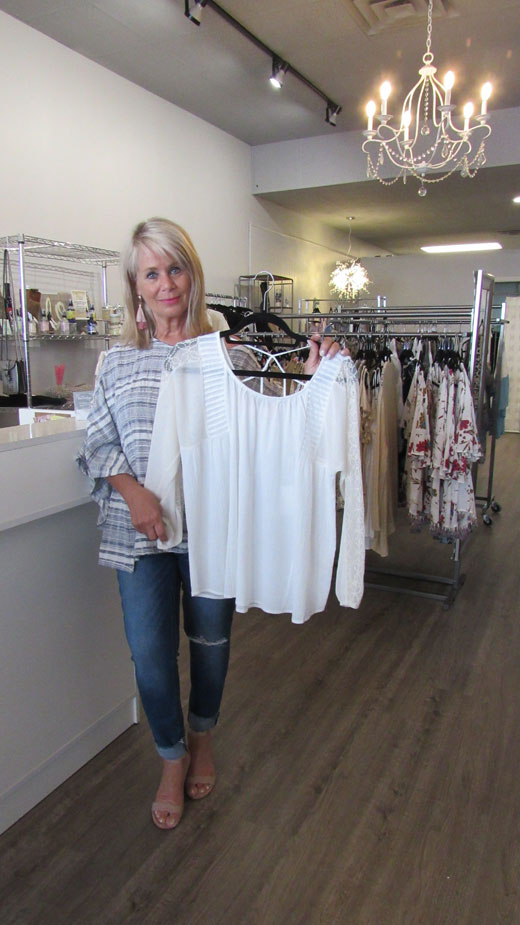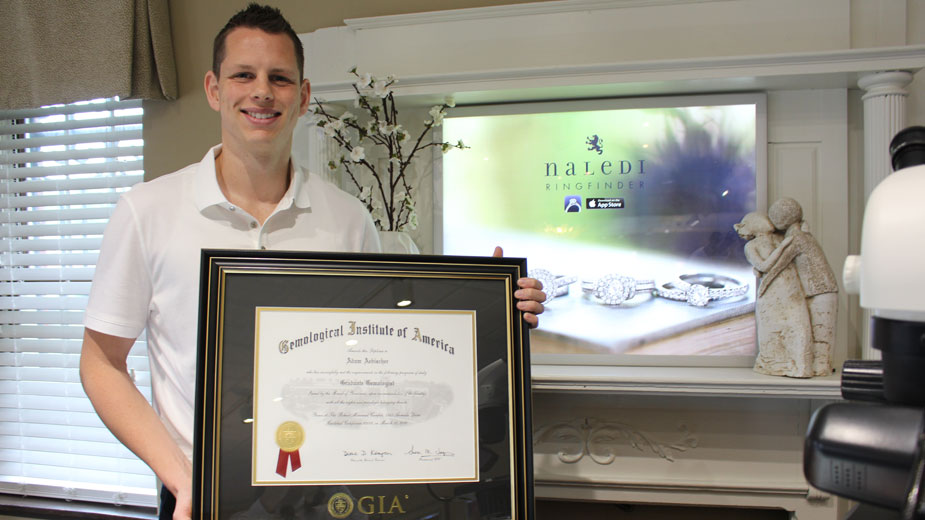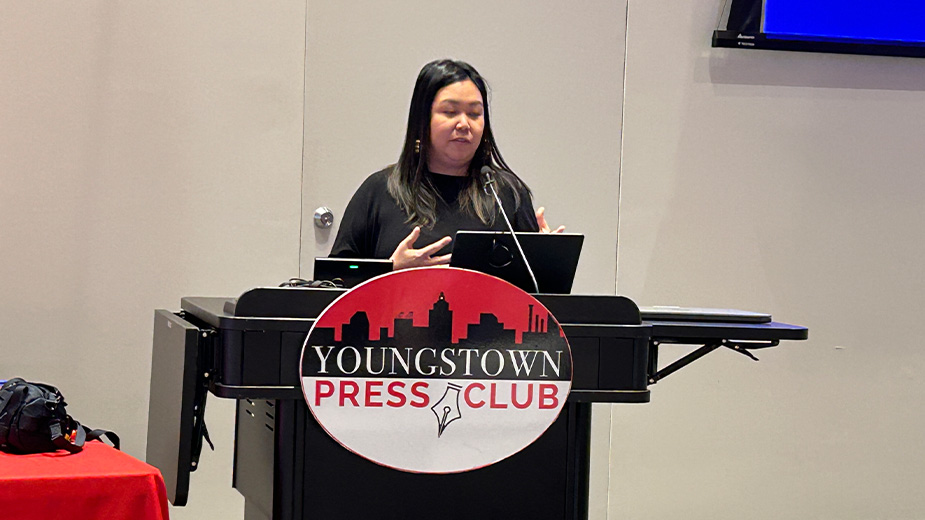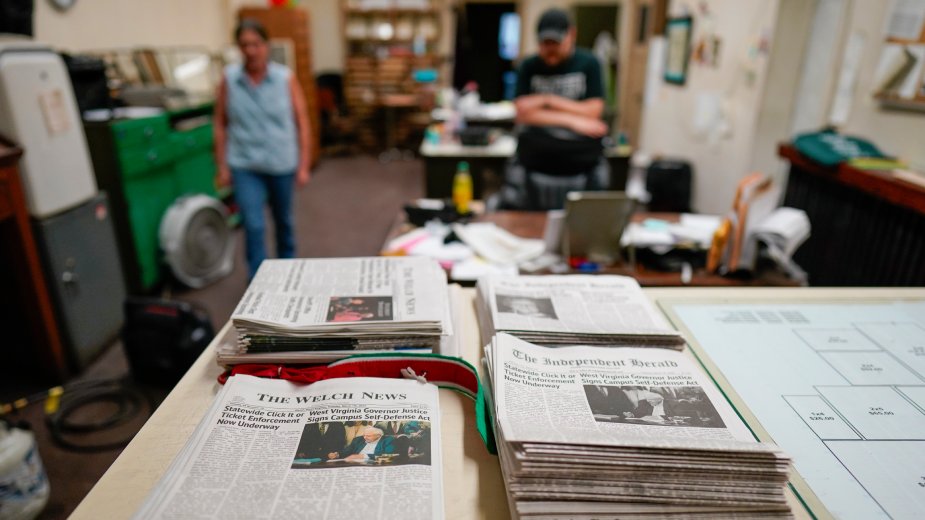Retail Customers Gravitate to Boutiques
YOUNGSTOWN, Ohio – If there is a retail apocalypse, independent boutiques seem to be weathering the storm. Sales are up and shop owners credit a renewed interest in shopping local among customers.
Sales at Blush Boutique in Boardman have doubled since owner Susie Schultz moved the shop to its new site, 7807 Market St., 15 months ago, she says. As more of Schultz’s customers opt for boutiques instead of big-box chains, she looks to expand.
“My goal is to open up a second one in town and one out of town,” she says. “I’m going to keep plugging away and keep my head above water. As long as I keep my prices fair and the shopping experience good, we’ll be OK.”
Also on Market Street in Boardman, Ivory and Birch enjoyed a growth year in 2018, and 2019 sales are up year-over-year, says Deloran Muransky, president and owner. Although retailers such as Sears and Dillard’s have closed in the area, she doesn’t believe that’s driving those increases. Instead, Muransky sees a shift in the retail industry with customers leaning more toward local retailers and online shopping, which she says is a key factor in her growth.
“I have noticed more people coming in looking for more specific things, but I think it’s just a general shift of online [shopping] and people shopping more locally to get stuff quicker when they need it,” Muransky says.
Adam Aebischer sees the same trend at his family’s jewelry store, Aebischer’s Jewelry in Poland. Internet sales aren’t the same “big scare” to the jewelry industry as they were when he first started working as a gemologist 10 years ago, he says. While the internet took away “a good chunk of our sales,” younger generations are gravitating to shopping at locally owned, bricks-and-mortar stores, he says.
“They’re actually wanting that small, independent experience,” he says. “I think that’s a great insight into the future.”
Following a record year in 2018, sales are up 10% year-over-year, Aebischer says. Competition from online retailers remains in the back of Aebischer’s mind, but the shop is working to capitalize on the renewed interest from younger buyers – those in their late teens and early 20s – who are buying gifts for their parents and significant others, as well as engagement rings, he says.
Being aware of what customers buy and listening to what they want are important strategies for independent retailers, says Shelley Genova, owner of La Ti Da Boutique, Boardman. When Genova opened the shop in 2007, the trend was to carry higher-priced items, such as jeans and coats that sold for $200. Today, items are sold at a lower price point, she says.
“If people are buying things, they want a whole bag of clothes,” she says. “A lot of it is social media. They get their picture taken in them and they don’t want to be seen in that outfit two, three and four times.”
Along with price point, boutiques need to provide a “good in-store experience,” otherwise shoppers are likely to buy online, Genova says. To draw foot traffic, she runs a customer-loyalty program, hosts in-store events and leverages social media to generate online buzz, such as her Wine Down Wednesday, which is held on Facebook Live at 6:30 p.m. weekly. Wine Down Wednesday has drawn online customers from as far as Florida, she says.
“I pour a glass of wine and invite my customers to have a glass of wine with me,” Genova says. “I make a full rack of all the new arrivals we got in for the week. We’re so busy that if you don’t see the new arrivals once a week, you’re going to miss out because we sell out of them within a week. People comment to purchase.”
That uniqueness and exclusivity in merchandise is common among independent retailers, usually out of necessity. While Village Quilts in Canfield can’t compete with the inventory of a big-box competitor such as Hobby Lobby, it differentiates its stock from the chains, says co-owner Clare Neff.
The fabric and quilting supply shop determines its inventory based on customer interest and what its staff would want to use, Neff says. Typically, fabric stocked there is of a higher quality than that of big-box retailers, she says.
“There’s different product lines we follow,” she says. “There’s so many different variations, especially in cotton. You go with thread count and the quality of the fabric; so it’s finding who you feel is the best manufacturer.”
Social media and online sales have helped the shop build a base of loyal customers and reach buyers from outside the area, she says. Television commercials on the PBS station in Cleveland have drawn shoppers to the store.
“Quilters travel. If they discover that you have items they want, they will travel,” Neff says. “We also sell online because a lot of people buy brand names or even collection names.”
Since opening in the Huntington Plaza in Boardman last year, sales at Grey Boutique have already doubled year-over-year, says owner Amy Abruzere. In that time, the clothing store has increased the number of labels it carries, although Abruzere remains selective about what she orders. That’s why she attends private meetings and showrooms in New York City, Chicago and Los Angeles to research and choose her product lines, she says.
“I try really hard to differentiate ourselves from other boutiques in the area; so sometimes that means you have to research on labels,” she says. “It’s kind of like trial and error.”
Blush’s Schultz brings in lines from New York and Chicago as well, but prefers the Atlanta market, she says. When Schultz opened her shop, it was important to her to cater to the average woman’s body and wallet, she says, so customers can get the boutique shopping experience without having to pay $100 for a top.

Schultz stocks items based on current trends, and her sizes can go up to extra large. However, ordering gets tricky because she doesn’t get to choose her sizes, she says.
“Everything is a pre-pack unless you are buying high end,” she says. “You’re not going to buy $20,000 worth of two tops. It’s about knowing your clientele and mixing other things in with it.”
La Ti Da’s Genova used to work with an inventory planner, but now does the monthly planning herself, she says. Like other boutiques, Genova keeps a low inventory of contemporary styles that work for older and younger women, she says. “We have a really high turnover and the business is thriving,” she says.
Many of the products at Aebischer’s are available only to fine, independent jewelers, Adam Aebischer says. For example, Aebischer’s is one of eight shops in Ohio to carry the Naledi bridal line. While Aebischer’s enjoys relative exclusivity with some of its brands, its offerings are not the least expensive, he notes.
“I’m up front with a lot of my customers. With the diamonds we buy, with the jewelry we have, it’s not the least expensive in the market, but we’re after that quality,” he says.
Despite the price point, the shop has a base of loyal customers who extend beyond Ohio, Aebischer says. “I’ve been dealing with a young man who’s flying in from New York to purchase his ring here,” he says. “We’ve sold to California. I’ve shipped to England before.”
Aebischer is a recent graduate gemologist from the Gemological Institute of America, while his brother, Alex, just became bench certified, so he can answer specific repair questions. The company is purchasing an arc welder this year to handle more in-store repairs, he says.
The shop is even discussing with its marketing agency the possibility of expanding into internet sales, “because that’s the way of everything right now.” but Aebischer says it will still be used as a tool to ultimately bring customers into the store.
“That’s a little bit of how we’ve tailored even our website,” he says. “We list some of the brands; we’re not a big branded store. We like to help educate people on the quality of the product we have.”
Pictured: Being a graduate gemologist from the Gemological Institute of America gives Adam Aebischer the credentials to identify, evaluate and grade diamonds and colored gem stones, he says.
Copyright 2024 The Business Journal, Youngstown, Ohio.



